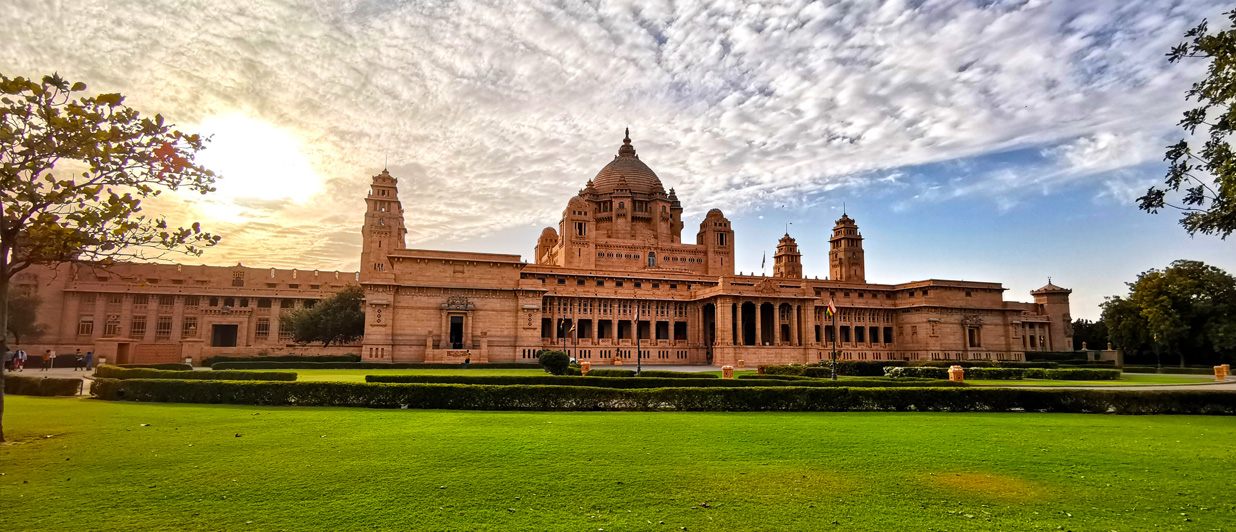Jodhpur: The Crown Jewel Of Marwari Tradition
Set on the edge of Thar Desert, Jodhpur was founded in 1459 by Rao Jodha and was the capital of erstwhile Marwar. Marwari culture known for its rich customs and traditions is best preserved in Jodhpur city. The language, the food, the dresses and even their famous breed of horses is called Marwari that are known for their valour and strength.
The monuments of Jodhpur showcase the refined taste of the maharajas and their opulent lifestyle. The 15th century Mehrangarh Fort that dominates the town offers a glimpse into the royal family and its history. The Jaswant Thada, a memorial to the Maharaja, is a great example of fine marble craftsmanship. The colossal Umaid Bhawan Palace is one of its kind in the world with unique Art deco of 1930’s and 1940’s used in its interior. It was built by Maharaja Umaid Singh (1928-1943) to give jobs to the famine-stricken people of Marwar, more than 3000 people worked per day till its completion. It was the first famine relief work started by anyone in the country and when completed, it was the largest private residence in the world with 26 acres of land area.

Rajasthan is famous for its colorful dresses and the Jodhpuri attire surely stands out. But what makes it unique is its style – the Jodhpuri coat, Jodhpurs (the riding pants), and the Jodhpuri style of turban. All these make it a trend setter not only in Jodhpur but across the country. While architecture and attire add a vibrant quotient to Jodhpur, it is also well-known for its fascinating textiles with prints like Lehriya (wave design), Mothda and Bandhej (tye and dye). Each fabric has its own story worth being explored.
Jodhpur is also known as the ‘Blue City’ owing to the tranquil blue color that adorns the houses of the old city. Saunter into the narrow lanes and you will see these charming homes bubbling with daily activities.
One cannot simply leave Jodhpur without having tasted its delicious cuisine. Mawa ki Kachori (crispy sweet patties with dry fruits, milk solids served with sugar syrup), Mirchibada (a green chilly dipped in chickpea flour and stuffed with spicy masala, potatoes, cashews and raisins), Pyaaz ki Kachori, Malai ke Laddoo, Gulab Jamun from Pungalpada and Makhaniya Lassi from the clock tower. All these rich dishes are perfect to add those extra kilos but as the people of Jodhpur say, “It is better to die with a full stomach than on an empty one”.
Jodhpur is referred to as the cultural capital of Rajasthan. Its colours, traditions, food and the sweet language spoken make this city one of the most livable cities in this country. A warm and friendly vibe, mighty monuments, humble cuisine and a riot of culture, Jodhpur is truly a majestic jewel.







